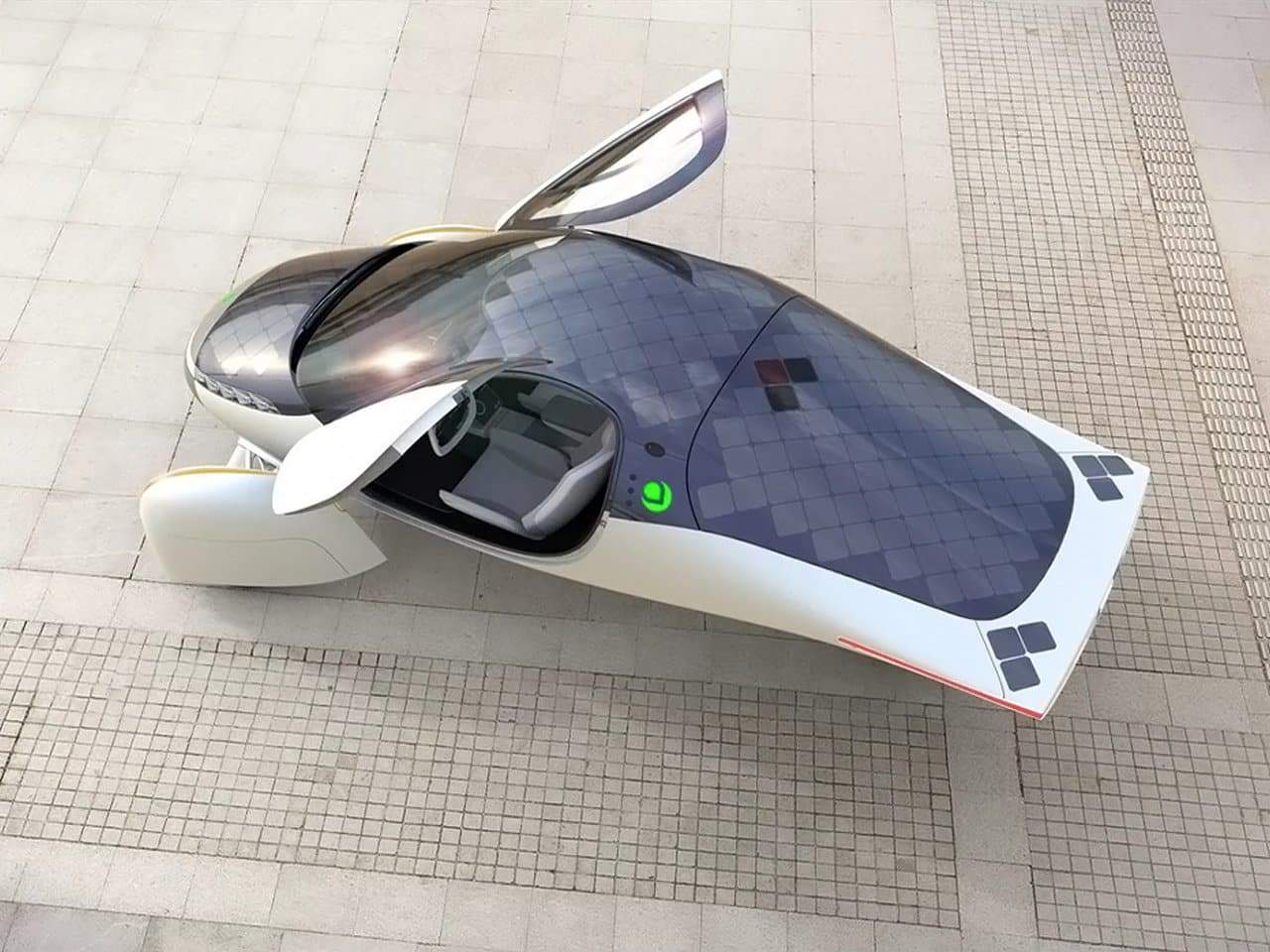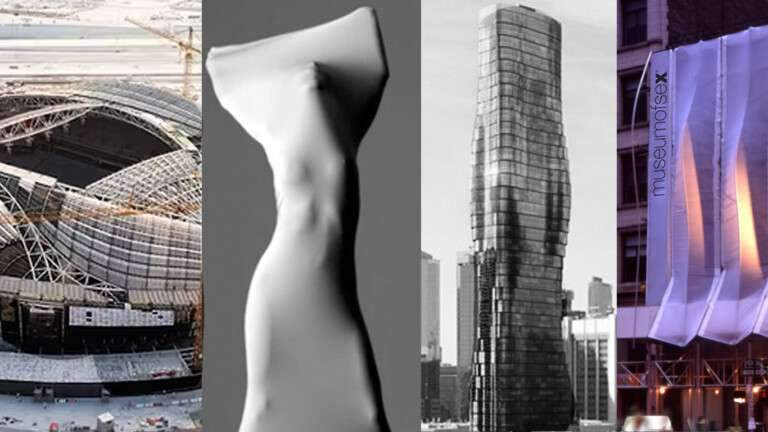The Role of Solar Energy in the Future of Transportation
Solar energy is revolutionizing transportation by promoting sustainability and reducing reliance on fossil fuels. Solar-powered transportation is expanding with the integration of solar panels into electric vehicles, trains, and buses. These panels convert sunlight into electricity, which is stored in advanced batteries for efficient energy use.
To support this shift, solar charging stations are being developed to facilitate clean energy adoption. Vehicles equipped with photovoltaic cells generate electricity and store it in lithium-ion or nickel-cadmium batteries, increasing energy independence.
Advantages of Solar-Powered Transportation
1. Renewable Energy Source
Solar energy is abundant and reduces dependence on finite fossil fuels, ensuring long-term energy security.
2. Environmentally Friendly
Solar-powered vehicles produce zero emissions, minimizing air pollution and combating global warming.
3. Lower Operating Costs
Once solar panels are installed, operational costs drop significantly due to the elimination of fuel expenses. Some vehicles also support electric charging for extended usability.
4. Reduced Carbon Footprint
Using solar energy decreases carbon emissions, making transportation more eco-friendly.
Challenges of Solar-Powered Transportation
1. Limited Travel Range
Solar-powered vehicles currently have shorter travel ranges due to energy storage limitations, making them ideal for short trips.
2. High Development Costs
Despite technological progress, research and manufacturing costs remain high, slowing widespread adoption.
3. Limited Infrastructure
The number of solar charging stations is still insufficient, creating challenges in large-scale implementation.
4. Weather Dependence
Cloudy and rainy conditions reduce solar efficiency, affecting performance in certain regions.
Innovations in Solar-Powered Transportation
Solar vehicle design has evolved significantly. Modern electric cars feature aerodynamic shapes to maximize energy efficiency. Electric bikes now combine durability with high performance, making them ideal for urban and adventure travel.
In maritime applications, solar panels blend seamlessly into yacht and boat structures, enhancing efficiency while maintaining aesthetics. The aviation sector is also advancing, with aircraft designs inspired by nature to optimize solar power usage.
The Future of Solar-Powered Transportation
With continuous advancements, solar-powered transportation is becoming more efficient and accessible. Researchers are improving energy storage and developing high-efficiency materials for better sunlight absorption. Expanding solar charging infrastructure will further accelerate the transition to clean energy.
Despite existing challenges, ongoing innovations in solar energy offer a promising future for sustainable transportation, reducing environmental impact and paving the way for a cleaner, greener world.
Examples of solar-powered transportation:
Solar-powered electric scooter

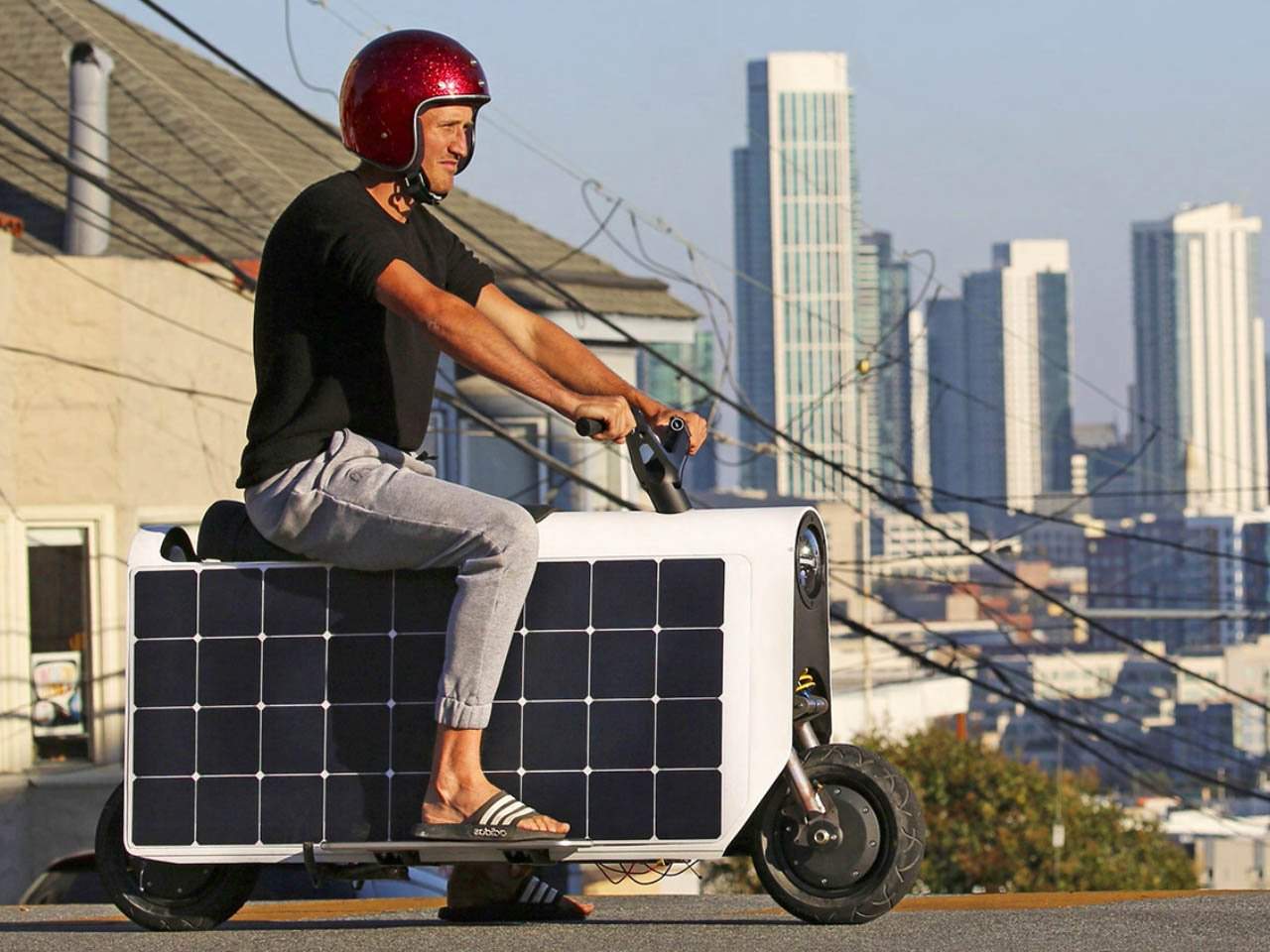
Lightfoot Scooter: A Sustainable Urban Mobility Solution
The Lightfoot scooter exemplifies the future of eco-friendly urban transportation by integrating solar energy into daily commuting. Equipped with built-in 120W solar panels, it efficiently charges its 1.1 kWh battery, reducing dependence on traditional energy sources. This innovation makes it a sustainable and cost-effective alternative to conventional electric scooters, promoting clean energy mobility in cities.
🔗 Read also:
Design & Performance
The Lightfoot scooter combines innovative design with high performance, making it a practical and eco-friendly solution for urban commuting. It features a spacious 45.2-liter storage compartment, allowing riders to carry luggage with ease. To enhance usability, one of the solar panels is mounted on a hinge, ensuring convenient access to storage without removal.
Powered by dual 750W brushless electric motors, the Lightfoot scooter reaches a top speed of 20 mph and covers up to 37 miles on a full charge. These features make it an efficient and sustainable choice for short-distance urban travel.
Solar Efficiency & Extended Range
Harnessing solar energy, the Lightfoot scooter benefits from unlimited renewable power, extending its daily range. Under optimal sunlight conditions, the integrated solar panels can add up to 18 extra miles, minimizing reliance on traditional charging and enhancing energy efficiency.
Comfort & Maintenance
Designed for daily convenience, the Lightfoot scooter features a cushioned seat and an additional footrest, making it comfortable for a second passenger. Its widely available components ensure easy maintenance and lower repair costs, unlike specialized vehicles that require rare parts.
Feasibility & Sustainability
As a pioneering step in sustainable urban transportation, the Lightfoot scooter contributes to lower carbon emissions and reduces dependency on conventional charging infrastructure. While its range limitations and weather-dependent efficiency present some challenges, it remains a significant advancement toward a greener future in urban mobility.
The Solar-Powered Electric Car

Design & Performance
The Lightfoot scooter is an innovative solar-powered vehicle designed for efficient and eco-friendly urban commuting. It features a spacious 45.2-liter storage compartment, allowing users to carry luggage with ease. To enhance usability, a hinged solar panel ensures easy access to the storage space without removal.
Equipped with dual 750W brushless electric motors, the Lightfoot scooter reaches a top speed of 20 mph and covers up to 37 miles per charge, making it an ideal solution for short-distance travel.
Solar Efficiency & Extended Range
By harnessing renewable solar energy, the Lightfoot scooter minimizes dependence on traditional power sources. Under optimal sunlight conditions, the integrated solar panels can generate up to 18 additional miles, extending the scooter’s range and enhancing overall energy efficiency.
Comfort & Maintenance
Designed for daily use, the Lightfoot scooter ensures maximum comfort with a cushioned seat and an extra footrest, making it suitable for carrying a second passenger. Its widely available spare parts simplify maintenance and repairs, reducing long-term ownership costs.
Feasibility & Sustainability
As a leading innovation in sustainable transportation, the Lightfoot scooter actively reduces carbon emissions and promotes clean energy mobility. Despite range limitations and weather dependency, it remains a game-changer in the shift toward eco-friendly urban transportation.
Oneiric: The Luxury Solar-Powered Yacht

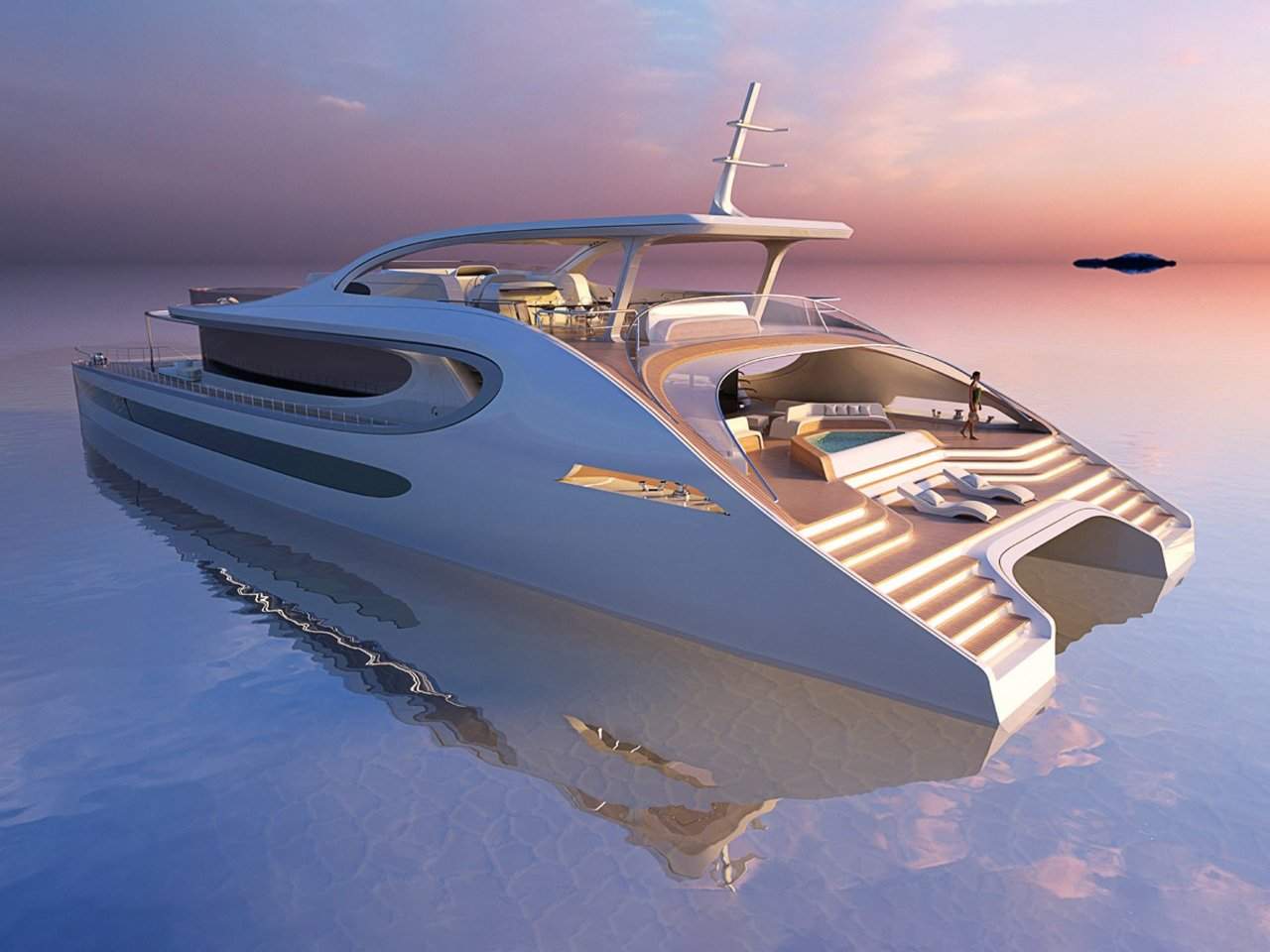
A masterpiece of engineering, Oneiric seamlessly blends luxury and sustainability. Designed by Zaha Hadid Architects in collaboration with Rossinavi, this 42-meter yacht redefines luxury yachting. With its futuristic, streamlined design and advanced solar-powered technology, it sets a new benchmark for eco-friendly maritime travel.
Integrated Solar Power for a Sustainable Sailing Experience
Oneiric is fully solar-powered for daytime voyages, featuring a roof covered in high-efficiency solar panels. Its hybrid system combines solar energy with fuel, enabling fully electric sailing for 70% of transoceanic journeys. This technology reduces carbon emissions by approximately 40 tons compared to conventional yachts. Additionally, when docked, the yacht supplies energy to a villa using its solar-charged batteries, maximizing energy efficiency.
A Luxurious Design Combining Elegance and Comfort
The yacht’s fluid, organic aesthetics feature curved lines and wooden elements, creating a seamless and inviting atmosphere. The master suite offers a breathtaking panoramic 180-degree ocean view, while expansive indoor and outdoor spaces provide the perfect setting for entertainment and relaxation.
Unparalleled Comfort & Serenity
Designed to accommodate eight guests and a crew of six, Oneiric includes four luxurious cabins equipped with state-of-the-art amenities. The Zero Noise System ensures an ultra-quiet sailing experience in electric mode, enhancing comfort and serenity.
Oneiric is more than just a yacht—it’s a vision for a sustainable future in luxury maritime travel.
Solar-Powered Aircraft: A Step Towards Sustainable Aviation
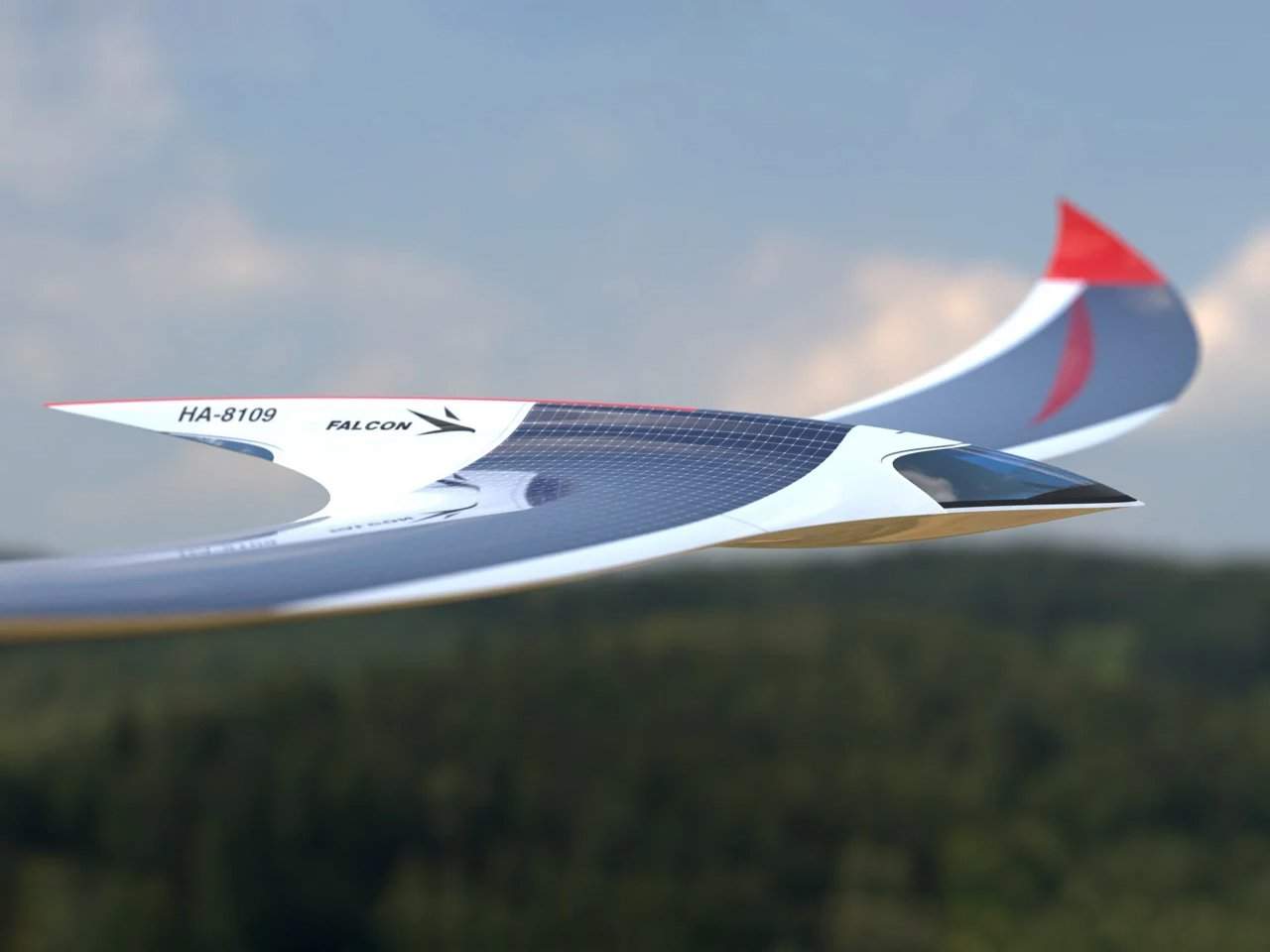
In recent years, the aviation industry has made remarkable strides toward sustainability, with solar-powered aircraft emerging as a groundbreaking innovation. The Solar Impulse, developed by Skydweller Aero, proved the feasibility of long-distance fuel-free flights. This achievement has paved the way for further advancements, including the Falcon Solar project, which redefines sustainable aviation with its unique design and exceptional energy efficiency.
Solar Aircraft Design: A Fusion of Aerodynamics & Sustainability
The Falcon Solar adopts an innovative engineering approach that maximizes solar energy utilization while optimizing flight efficiency. Its inverted wings, inspired by falcons, enhance lift force and reduce air resistance, significantly improving aerodynamics. A lightweight structure minimizes energy consumption, integrating advanced solar cells that enable extended flight durations without additional power sources. By adopting this approach, solar-powered aircraft contribute to reducing carbon emissions, making them a viable alternative to traditional airplanes.
The Shift to Clean Aviation: Challenges & Opportunities
The transition to solar-powered aircraft is part of a broader effort to create a sustainable future in air transportation. These aircraft reduce reliance on fossil fuels and minimize aviation’s environmental impact. However, key technical challenges remain, including enhancing solar cell efficiency for better energy storage, developing advanced batteries to support night flights and cloudy conditions, and increasing payload capacity without compromising performance.
Towards a Future Powered by Renewable Energy
As sustainable aviation research progresses, the coming decades are expected to bring significant improvements in solar aircraft design and operational efficiency. If these technologies reach their full potential, the aviation industry could move closer to an era where renewable energy powers air travel, creating a cleaner, emission-free future.
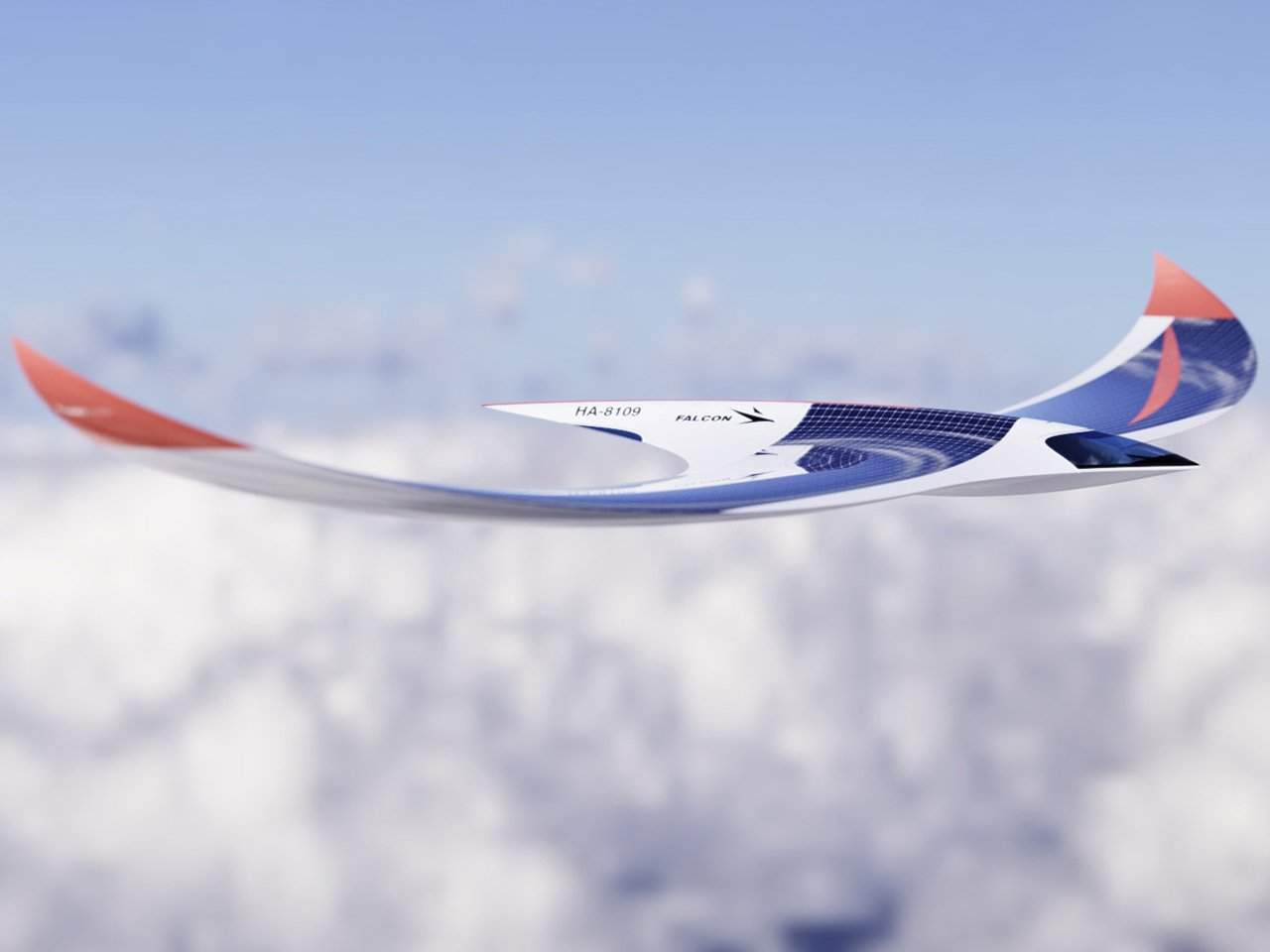
Solar Aircraft Design: A Revolution in Aviation Engineering
Solar-powered aircraft introduce a new paradigm in aviation, embracing unconventional designs that eliminate traditional components found in standard airplanes. Among the most notable innovations are aircraft without rudders or vertical stabilizers, relying instead on advanced aerodynamic control technologies that enable smooth maneuverability and exceptional operational efficiency.
- These aircraft feature wings covered with solar panels, capable of generating energy during flight, allowing them to operate without fossil fuels.
- This approach marks a natural progression in the journey toward sustainable aviation, bringing the world closer to the dream of emission-free air travel powered entirely by renewable energy.
Challenges & Prospects of Solar-Powered Transportation
The adoption of solar energy in transportation represents a radical shift in mobility systems, reducing dependence on fossil fuels and minimizing environmental impact. However, several challenges still hinder the widespread implementation of these technologies, including:
- Weather Dependency: Solar efficiency is affected by climate variations, which may limit the performance of solar-powered aircraft and vehicles in certain regions.
- Infrastructure Limitations: Charging and storage stations for solar vehicles are not yet widely available, requiring significant investments to develop this infrastructure.
- High Initial Costs: Although operational costs for solar aircraft and vehicles are low, manufacturing and development expenses remain higher than those of conventional transportation methods.
Despite these challenges, continuous advancements in energy storage technologies and battery efficiency are making these transportation solutions more accessible, accelerating the transition to a more sustainable future.
Design Revolution in Sustainable Transportation
Innovation in sustainable mobility is not limited to technology alone—it also encompasses aesthetic and functional design evolution to enhance appeal and efficiency. The ability to merge high performance with sleek, modern designs now caters to consumer demands for both sustainability and style.
- For example, the Aptera solar car features an aerodynamic design that minimizes energy consumption. The Oneiric yacht embodies luxurious sustainability through eco-friendly engineering, while the E-THUNDER electric bike blends powerful performance with a futuristic aesthetic.
- This transformation signals a new era in mobility, where sustainable options are no longer just eco-friendly alternatives but symbols of sophistication and technological innovation in modern transportation.
Towards a More Sustainable Future in Mobility
With ongoing research and increasing investments in renewable energy, the transportation industry is shifting toward cleaner power sources. In the coming years, we can expect significant advancements in the efficiency and practicality of solar-powered vehicles, making them a viable option across various sectors.
The move toward sustainable transportation is not just about environmental preservation—it reflects an evolution in engineering and design, paving the way for a new era where efficiency, sustainability, and innovation converge to redefine modern mobility.

